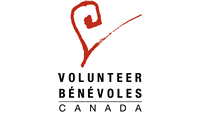Bridging the Gap
Bridging the Gap
Enriching the Volunteer Experience to Build a Better Future for Our Communities
Volunteer Canada listens to the experiences of volunteers and organizations. We stay on top of trends. And we research emerging topics. In 2010, we began hearing about a new issue. It was an issue seen by both volunteers and organizations. People we spoke with saw a growing gap between what volunteers look for and the opportunities organizations offer.
We needed to verify this observation, so we researched the topic. We wanted to develop new strategies for better volunteer engagement and improve the volunteer experience.
How did we do it? Check out the summary report.
About the report
The result of our research is the Bridging the Gap report. It’s a pan-Canadian study by Volunteer Canada and Manulife Financial. The research focused on four volunteer groups: youth, families, baby boomers and workplace volunteers.
With that work, we developed a picture of the characteristics of today’s volunteers. And we discovered the barriers and challenges to effective engagement. We learned that:
- Today’s volunteers have goals.
- They’re driven by results.
- They’re mobile.
- They’re self-directed.
- They have multiple interests.
- They often seek short-term opportunities that use their skills.
The study also gathered advice on how organizations can better engage today’s volunteers.
Gaps identified
We found differences in the needs of youth, families, baby boomers and workplace volunteers. But some of the gaps cut across all volunteer groups. For example:
- Many people are looking for group activities BUT few organizations can offer them.
- Many people come with professional skills BUT many professionals look for volunteer tasks that differ from their work.
- Organizations are expected to define the roles of volunteers BUT many volunteers want the flexibility to create their own opportunities and schedules.
- Many organizations want long-term commitment BUT many more volunteers are looking for short-term opportunities.
- Many organizations focus on what they need BUT many volunteers come with their own goals to be met.
Advice to organizations
Our survey participants gave advice on how organizations can improve the way they engage volunteers.
Many of the tips were basic. Organizations should build meaningful relationships with volunteers. They should understand where volunteers are in their lifecycle. Organizations should learn a volunteer’s goals and skills.
Human resources should include volunteers. Some policies and benefits apply equally to volunteers and paid staff.
Today’s volunteers have erratic schedules. Volunteers of all ages have multiple demands. These include work, school and family. Organizations benefit from being flexible and accommodating.
Organizations should be sensitive to gender, culture, language and age. A welcoming and inclusive environment attracts volunteers.
While many organizations use technology and social media, volunteers want to find more information online.
Improving the volunteer experience
Two-thirds of volunteers said they’d had at least one bad volunteer experience. Some common complaints include:
- Skills not being used
- Poor preparation by the organization
- Organizational politics
- Too much bureaucracy
Many youth said they’d experienced age discrimination while volunteering. Families felt there were not enough volunteer opportunities suited to all family members. Baby boomers wanted to see the impact of their efforts. Workplace volunteers wanted to get experience and grow their networks.

